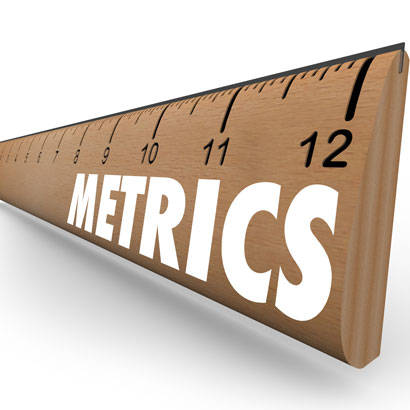
Start the new year off right by taking an action that not only helps your agency better serve the public, but also provides park and recreation agencies like yours with access to invaluable peer insight. This action does not involve you or your agency having to give any money or to reallocate valuable resources away from the services provided to the public. You will need to expend some time, but 15 to 30 minutes tops should do and, for many agencies, the time will be even shorter.
So, what is this “action” that I am talking about? It’s completing the Agency Performance Survey for your agency in NRPA Park Metrics (formerly known as PRORAGIS). Through this survey, NRPA collects and analyzes park and recreation agency data from across the country. This information is then the basis of the annual summary report of key park and recreation statistics we publish every spring.
In our effort to make the names of our research tools more self-explanatory, this summary report, which is known as the NRPA Field Report, has a new name: the NRPA Agency Performance Review. Although the name has been changed, this report will continue to provide a comprehensive profile of local and regional park systems in the United States. It presents an informative look at the significant trends currently affecting park and recreation departments. There is no other industry benchmarking resource that provides you with more powerful data and insights to help you gauge your agency’s performance against those of its peers.
However, this resource is only as good as the information you contribute, so your contribution is imperative. The tremendous impact of NRPA Park Metrics comes from the more than 1,000 agencies that have entered their data. And, this impact is further enhanced when agencies update their data each year. We want to hear from all agencies: big and small, with large budgets and frugal means, serving millions and serving hundreds. Your voice and contribution are valued and valuable, so I encourage you to make it a habit to update your agency’s data in NRPA Park Metrics each January.
As noted in this column a few months ago, we have made a number of changes to this resource in direct response to the feedback from park and recreation professionals. The most significant change we made was a drastic streamlining of the survey instrument used to capture NRPA Park Metrics data. The 30-question survey takes far less time to complete and only asks questions that are relevant to a majority of park and recreation agencies. The survey is organized into eight different sections:
- Jurisdiction (location, population, size of area served)
- Agency Operations (operating expenditures, revenue sources)
- Capital Budget (current year, five-year capital budget)
- Personnel (FTE counts, distribution of responsibilities)
- Workload (number of parks and buildings, mileage of trails, number of people served)
- Agency Responsibilities (what agencies operate, maintain, contract)
- Facilities (counts of facilities, athletic fields)
- Activities (sports leagues, cultural offerings, out-of-school time programs)
Perhaps you have wondered how agencies similar to yours utilize their staff, budget and/or resources. NRPA Park Metrics can help with easy-to-run reports and analysis. Plus, get the conversation started, once you complete your profile, with an easy-to-read, side-by-side comparative report that allows you to spot similarities and differences at a glance.
If your agency is new to NRPA Park Metrics, it will take you less than 30 minutes to complete the Agency Performance Survey. If you’ve completed the Agency Performance Survey in recent years, it will take even less time to update your agency’s profile. How’s that possible? Well, we added a green button titled, “Copy Data From Existing Year,” to the survey that gives agencies the option to copy the prior year’s data into their 2016 survey.
Whether or not your agency has participated in the past, now is the time to enter your 2016 data into NRPA Park Metrics. In the coming weeks, we will be putting the final touches on the 2016 NRPA Agency Performance Review (formerly the NRPA Field Report), which is one of our most read research reports every year. Having your agency’s data included is vital to making it the best resource for you and your agency to take advantage of.
As a thank-you for taking the time to enter or update your agency’s Park Metrics data for 2016, you will receive a customized Agency Performance Report that compares your agency’s performance to the Community Park and Recreation Standards. This report will help you and your colleagues make better informed decisions and help your agency be more effective and efficient. All agencies that have entered their 2016 survey data by the end of January will receive a customized Agency Performance Report later this spring.
Furthermore, your agency data, along with that of the more than 1,000 other park and recreation agencies that have maintained NRPA Park Metrics profiles, are the basis of a series of useful and informative interactive tools. With these tools, you can take a closer look at 21 sets of metrics cross-tabbed by peer agencies that match yours in terms of:
- Acres of parkland maintained by agency
- Budget size
- Jurisdiction population and type
- Number of FTEs
- Number of parks maintained
- Population per square mile
- Region of the United States
So, start 2017 by completing the 2016 Agency Performance Survey in NRPA Park Metrics.
Check your email inbox to see if there is an invitation to start or update your agency’s data. Otherwise, click here and select “Enter Your Agency’s Data” to begin input or updating your agency information today. If you need assistance, or have questions or concerns about entering your data in NRPA Park Metrics, contact Greg Manns, Melissa May or me.
We look forward to hearing from you.
Kevin Roth, Ph.D., is NRPA’s Vice President of Research. Melissa May is NRPA’s Research Manager.

